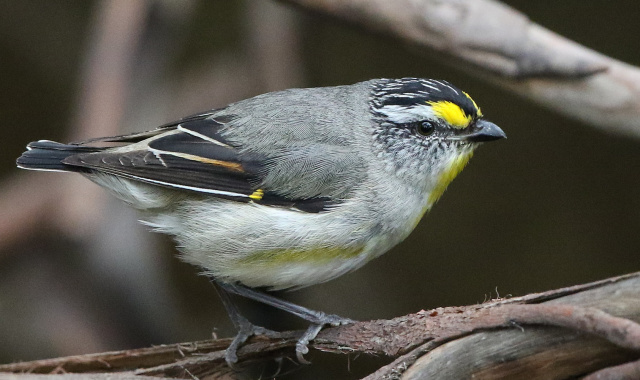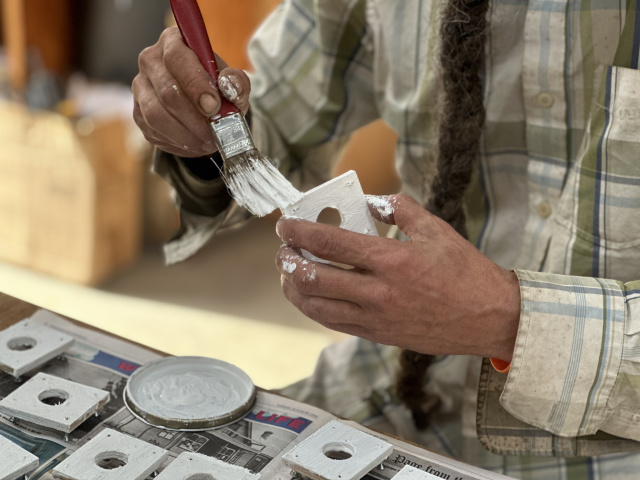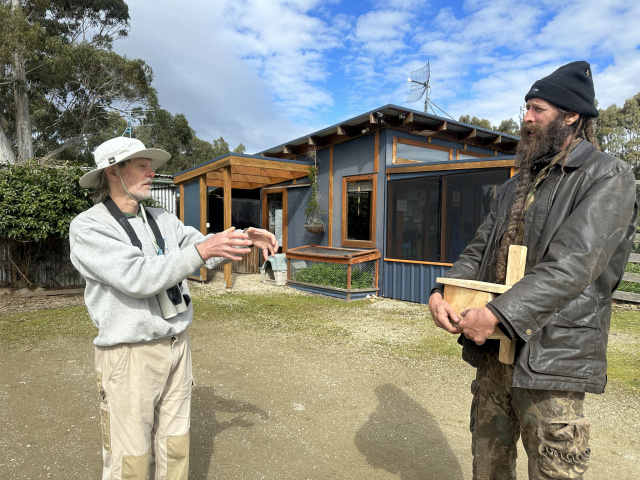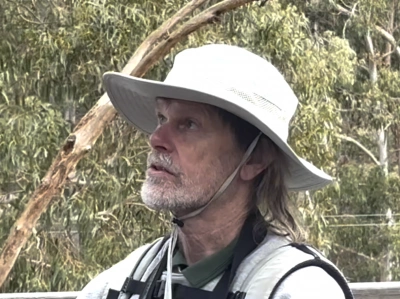Forty Spotted Pardalotes nest inside hollows. And there's other birds that like to nest in hollows and go into those hollows and evict the Forty Spotted Pardalotes.
Forty Spotted Pardalotes are sedentary birds - they maintain the same territory all year round. They have their territory and they have their nest site within their territory. They are real homebods, they know where they're going to breed this coming year. Now what will happen is that they start building a nest and then another bird comes along and pushes them out! There's two particular species that are the problems here, Striated Pardalotes, and Tree Martens. These are both migratory species that spend their winters on the Australian mainland, come down to Tasmania looking for nest hollows and they go to a hollow that Forty Spotted Pardalotes are using and they kick the Forty Spots out!

So if anybody else wants to take those nest hollows they just boot the Forty Spots out and then the Forty Spots don't have a nest site in their territory and generally they don't breed.
One of the things that we're working on is trying to come up with a nest box design which allows Forty Spotted Pardalotes in, but excludes these other birds. Now the difficulty is that even though these other birds are larger, most of that difference in size is in body length rather than in girth. We're working on and looking at entrance hole sizes and trying to come up with an entrance hole size which lets Forty Spots in but keeps others out.
We're pretty confident that we've got the Tree Martins locked out from the smallest hole that will let a Forty Spotted Pardalote in, but not so sure about the Striated Pardalotes yet. So that's ongoing research.

Now what will happen is that, okay, they're going to nest in here, start building a nest and then another bird comes along and pushes them out!

Forty Spotted Pardalotes nest inside hollows. And there's other birds that like to nest in hollows and go into those hollows and evict the Forty Spotted Pardalotes.
Forty Spotted Pardalotes are sedentary birds - they maintain the same territory all year round. They have their territory and they have their nest site within their territory. They are real homebods, they know where they're going to breed this coming year. Now what will happen is that they start building a nest and then another bird comes along and pushes them out! There's two particular species that are the problems here, Striated Pardalotes, and Tree Martens. These are both migratory species that spend their winters on the Australian mainland, come down to Tasmania looking for nest hollows and they go to a hollow that Forty Spotted Pardalotes are using and they kick the Forty Spots out!

So if anybody else wants to take those nest hollows they just boot the Forty Spots out and then the Forty Spots don't have a nest site in their territory and generally they don't breed.
One of the things that we're working on is trying to come up with a nest box design which allows Forty Spotted Pardalotes in, but excludes these other birds. Now the difficulty is that even though these other birds are larger, most of that difference in size is in body length rather than in girth. We're working on and looking at entrance hole sizes and trying to come up with an entrance hole size which lets Forty Spots in but keeps others out.
We're pretty confident that we've got the Tree Martins locked out from the smallest hole that will let a Forty Spotted Pardalote in, but not so sure about the Striated Pardalotes yet. So that's ongoing research.

Now what will happen is that, okay, they're going to nest in here, start building a nest and then another bird comes along and pushes them out!

You might like...

Ecology of the Forty-Spotted Pardalote

Improving reproductive success of forty spotted pardalotes

Bruny Island nesting box project

Genetic diversity and saving the forty spotted Pardalote
Newsletter
Sign up to keep in touch with articles, updates, events or news from Kuno, your platform for nature

